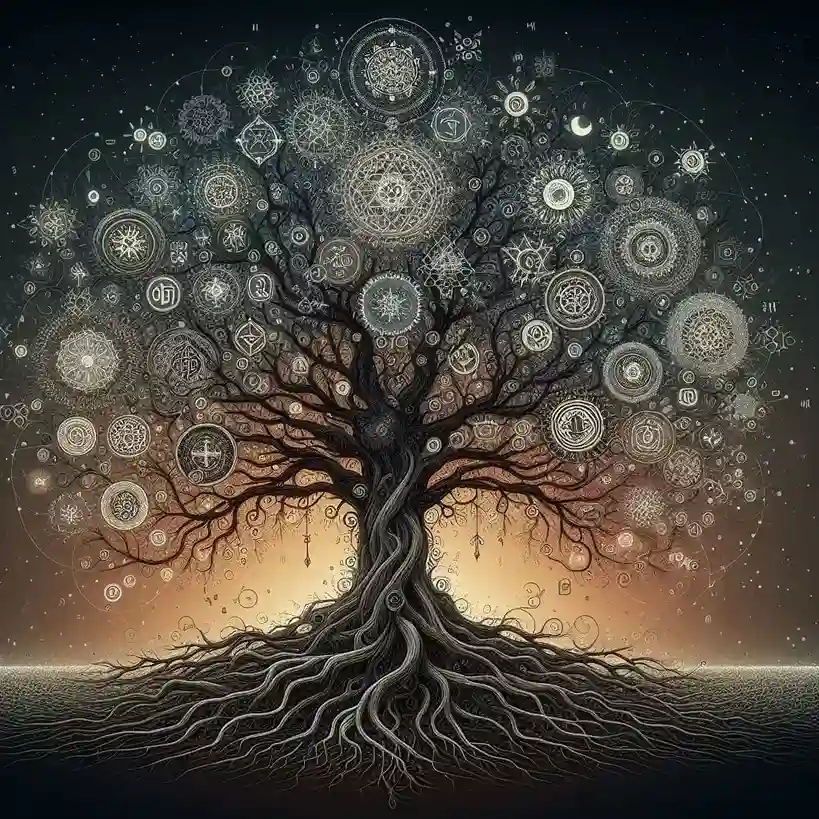Gustav Klimt’s Legacy: The Kiss, Tree of Life & Beyond

Gustav Klimt’s Legacy: The Kiss, Tree of Life & Beyond
Gustav Klimt (1862-1918), an Austrian symbolist painter, remains one of the most prominent figures in the Art Nouveau movement, known for his distinctive style that blends symbolism, sensuality, and modernism. Klimt’s body of work is vast and varied, encompassing murals, sketches, and paintings that often focus on the female body, decorated in ornate patterns and vivid colors. His art, marked by its decorative elegance and erotic nature, has continued to captivate audiences and critics alike, making him a pivotal figure in art history.
Klimt’s journey as an artist began at the Vienna School of Arts and Crafts, where he studied architectural painting. He initially gained recognition for his work on public buildings alongside his brother Ernst and their friend Franz Matsch. However, it was his later work that truly distinguished him. Klimt was a founding member of the Vienna Secession, a movement that sought to break away from traditional academic art. This period marked a significant shift in his artistic direction, as he began to develop the unique, highly stylized approach that would define his legacy.
Among his most famous works is “The Kiss” (1907-1908), which depicts an intimate moment between a couple, wrapped in gold-embellished robes. This painting exemplifies Klimt’s fascination with gold leaf, a technique he adopted after his travels to Ravenna, Italy, where he was inspired by the Byzantine mosaics. “The Kiss” is often regarded as a masterpiece of the early 20th century, encapsulating the essence of love and connection through its intricate detail and use of color.
Klimt’s “Portrait of Adele Bloch-Bauer I” (1907), also known as “The Woman in Gold,” is another highlight of his career. Commissioned by the husband of Adele Bloch-Bauer, a prominent member of Vienna’s Jewish community, this portrait is celebrated for its opulence and the detailed depiction of its subject. The painting’s complex use of gold and decorative patterns showcases Klimt’s skill in blending realism with abstract elements, creating a captivating image that transcends time.
The “Tree of Life” painting, a key component of Klimt’s Stoclet Frieze, created for the Stoclet Palace in Brussels, is an iconic symbol within his oeuvre. This painting stands out for its intricate design and the profound symbolism it carries, representing the interconnectedness of all life forms. The tree’s swirling branches, adorned with elaborate patterns and gold leaf, reach out in various directions, symbolizing growth and the cyclical nature of life. This work is a testament to Klimt’s ability to infuse symbolic content with aesthetic beauty, making it a central piece in the discussion of his artistic legacy.
The “Tree of Life” not only reflects Klimt’s interest in symbolic and allegorical themes but also illustrates his mastery of the decorative arts. The use of gold leaf and the attention to detail in the patterning demonstrate his influences from Byzantine, Egyptian, and classical Greek art, blending these ancient traditions with a modern sensibility that was ahead of his time. This painting, with its universal theme and stunning execution, continues to influence artists and captivate viewers, embodying the essence of Klimt’s artistic vision.
Klimt’s art was not without controversy; his murals for the University of Vienna’s Great Hall, deemed too provocative for their nudity and symbolic complexity, sparked public outcry. Despite this, or perhaps because of it, Klimt’s work has endured, pushing the boundaries of art and opening up conversations about sexuality, spirituality, and psychology in art. His bold use of color, innovative techniques, and thematic daring have left an indelible mark on the art world.
His influence extended beyond his immediate circle, contributing significantly to the development of modern art in Europe. Klimt’s mentoring of Egon Schiele, another pivotal figure in Austrian art, is particularly noteworthy. Schiele, known for his raw, expressive style, was deeply influenced by Klimt’s approach to form and composition, yet he pushed these elements in new, more emotionally charged directions.
Klimt’s death in 1918 marked the end of an era but the beginning of a lasting legacy. His work has been the subject of numerous retrospectives and continues to fetch high prices at auctions, reflecting his enduring appeal. “Portrait of Adele Bloch-Bauer I,” for instance, sold for a record-breaking $135 million in 2006, at the time making it the most expensive painting ever sold.
The relevance of Klimt’s work extends beyond its aesthetic appeal, touching on deeper themes of life, death, love, and the search for meaning. His exploration of the human condition, through the lens of beauty and eroticism, challenges viewers to consider the complexities of existence. This philosophical underpinning adds layers of depth to his work, inviting ongoing analysis and interpretation.
In the broader context of art history, Klimt is seen as a bridge between the 19th century and the modernist movements of the 20th century. His departure from realism and embrace of a more symbolic and decorative style paved the way for future avant-garde movements, including Expressionism and Surrealism. His impact on these movements, through both his aesthetic innovations and thematic explorations, underscores his significance in the narrative of modern art.
Klimt’s personal life, marked by relationships with several women who served as muses and subjects for his paintings, also plays a crucial role in understanding his work. These relationships, often intertwined with his artistic output, provide insight into his fascination with the female form and the themes of love and sensuality that pervade his art.
Beyond paintings, Klimt’s sketches and preparatory studies offer a glimpse into his creative process, revealing the meticulous planning and thought that went into each of his works. These drawings, often overlooked in favor of his more famous paintings, are essential for understanding the evolution of his artistic ideas and techniques.
Klimt’s legacy is also evident in the continued popularity of his work in popular culture. His distinctive style and iconic images have been reproduced on a vast array of merchandise, from posters and calendars to clothing and jewelry, making his art accessible to a wide audience. This commercial success is a testament to the universal appeal of his work and its ability to resonate with people across different cultures and eras.
In conclusion, Gustav Klimt’s contributions to the art world are immeasurable. His paintings, characterized by their sensual beauty, intricate detail, and profound symbolism, have left a lasting impact on the development of modern art. Through works like “The Kiss” and “The Tree of Life,” Klimt explored themes of love, life, and interconnectedness, pushing the boundaries of artistic expression and challenging viewers to see the world in new ways. As we continue to explore and interpret his rich body of work, Klimt’s legacy as a master of symbolism and decorative art remains undiminished, cementing his place as one of the most influential artists of the 20th century.






